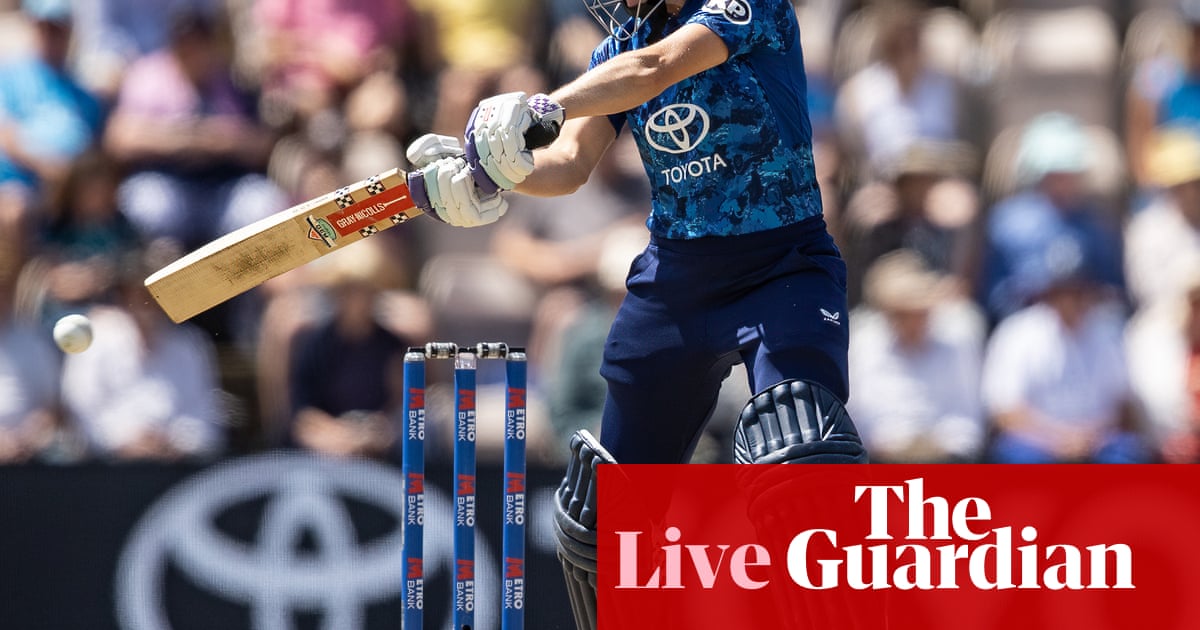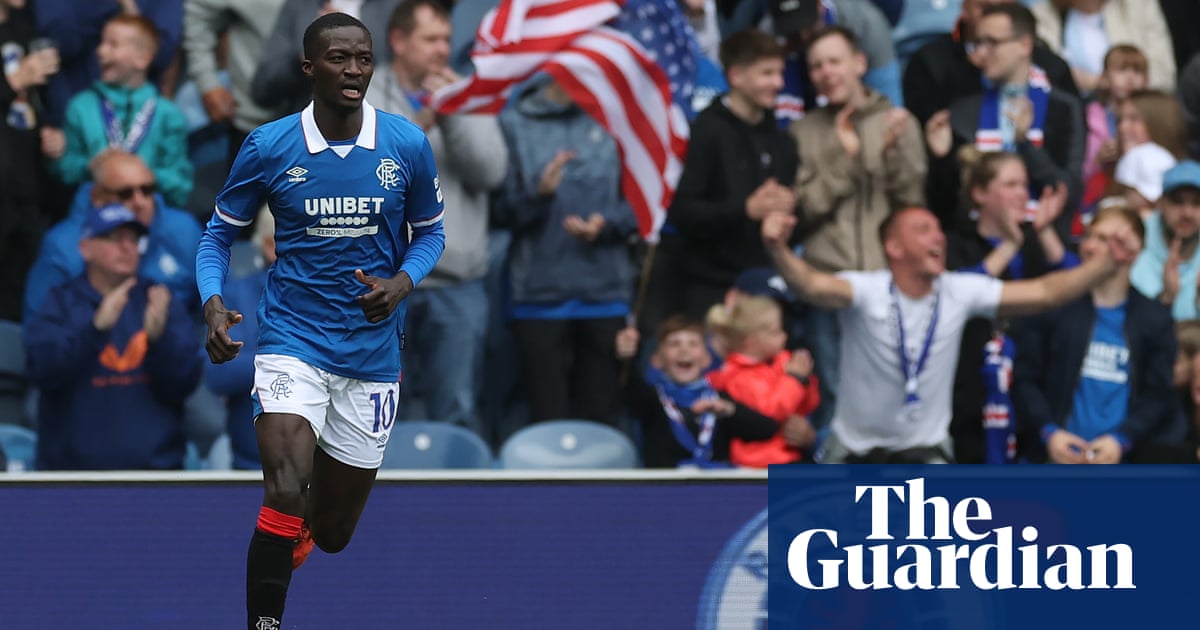Ashes question marks around Sam Konstas, Australian batting after West Indies tour
The Test tours of Sri Lanka and the West Indies were supposed to bridge the gap for the Australian men's Test team and paint a picture of the future both imminent and distant.Instead, with the Ashes starting in four months, it doesn't feel like we know much more than we did a year ago about who should line up against an England team brimming with bravado.And it starts at the top.It was never likely to be a straightforward tour for Usman Khawaja and Sam Konstas.In Caribbean conditions rarely seen by Australian cricketers, against a team cobbled together haphazardly and with nothing to lose, 19-year-old Konstas and 38-year-old Khawaja were both playing for their immediate international futures.Konstas had a top score of 25 and an average of 8.3 in the Caribbean. (AP: Ricardo Mazalan)And now, after three Tests and six innings each, those futures are both up in the air.The numbers are damning.Konstas scored just 50 runs at an average of 8.3, and Khawaja fared only slightly better, with a top score of 47 and a 19.5 average.Each Test followed a similar pattern for the opening pair.With Australia batting first in all three matches, Khawaja's opening effort of 47 and his stodgy 23 in Jamaica were the only occasions either batter made it to the first break.In each Test, Australia was back at the crease for its second innings before the close of play on day two, and in each match, neither Khawaja nor Konstas came out to bat on the third morning.Usman Khawaja has not passed 50 since a double century to start the tour of Sri Lanka in January. (Getty Images: Robert Cianflone)It was hardly subtle from the West Indies, but it didn't have to be.Around the wicket and angling in, their quartet of right-arm seamers homed in on the left-handed Khawaja's pads.Three of his six dismissals were LBWs prised with such an approach.Despite his tough series, Khawaja still played the odd authoritative shot and remained composed for much of his time in the middle, as he generally does.Konstas, meanwhile, seemed to deflate further with every innings.Konstas 'still working the game out' Photo shows Sam Konstas in a blue hat Sam Konstas's state coach believes the headline-grabbing teenager is starting to show signs of heeding lessons around match situations in his batting.That fearless, nation-stopping Boxing Day cameo felt like a lifetime ago as he fought for his life on the uneven, unfamiliar Caribbean pitches.His hard hands and lack of footwork were exposed again and again by Shamar Joseph in particular, who claimed Konstas's wicket on three occasions.By the final session of the third Test, Konstas's confidence was clearly shot. He grassed two catches and produced the misfield that allowed the West Indies to escape equalling the record for the lowest Test total of all time.But how much have we actually learnt from Konstas's first overseas series?Issues not confined to KonstasEven Steve Smith made batting look tough in the Caribbean. (AP: Ricardo Mazalan)For every Australian batter, the going was tough in the West Indies.There was uneven bounce and pronounced movement off the seam in Barbados and Grenada, while in Jamaica, the combination of magenta mystery and floodlights was never likely to provide ideal batting conditions.Across the three Tests, no batter came close to scoring a century for either side. The West Indies Brandon King made the highest individual score of the series with 75, while Steve Smith hit Australia's best of 71.Same old saviours rescue Aussies after 'woeful' top-order batting Photo shows Josh Inglis crouches down The more things change, the more they stay the same, as Australia's reshuffled top order fails and old faithful Usman Khawaja and Travis Head rescue the tourists' blushes.Travis Head was the only batter to average over 35, while in Jamaica, no-one made it past 50. The 516 runs scored between the two teams in that third Test was the lowest Test match aggregate for well over 100 years.It shouldn't be a surprise that batting was tough.The strength of this West Indies team lies in its fast bowling, and the hosts were always likely to choose venues and manufacture conditions that would suit Jayden Seales, Shamar Joseph and Alzarri Joseph, who all had excellent series to continue promising Test match careers.A faint Green light in the darknessBut, through the carnage, Cameron Green had a promising, if understated, tour.Arriving in the West Indies just one match into his international comeback, his failure in the World Test Championship final against South Africa meant questions were already being asked about him at number three.After a tough start as a Test number three, Cameron Green found some form to end his time in the Caribbean. (AP: Ricardo Mazalan)Before the opening Test in Barbados, Cummins told the media Green was seen as Australia's "long-term" first drop, despite having never played there in first-class cricket.After an uncomfortable first Test in which he made scores of 3 and 15, Green played perhaps the series' most telling innings in the second.He ate up 123 balls for his watchful 52, laying the foundation for his middle order to build a substantial second-innings lead.In the third Test, his two scores in the 40s made him by far the game's best batter.Starc and Boland power Australia to massive win Photo shows Mitchell Starc smiles with captain Pat Cummins after winning the third Test against West Indies. Scott Boland takes a first hat-trick as Mitchell Starc's record-breaking six-wicket haul sends Australia sprinting towards victory in the third Test in Jamaica.The manner in which Green made his scores will be particularly pleasing to the Australian selectors.Critics had labelled him too slow and too robotic to be effective against a lively new ball. But success against exactly that was the backbone of the West Australian's solid series.With his return to bowling now only a matter of months away, Green's success at number three is also vital for the future of Australia's newest Test success story, Beau Webster.The all-rounder continued his outstanding start to international cricket, scoring two vital half-centuries and picking up five wickets in the Caribbean.If Green can make the number three position his own, Australian selectors can feel confident including both in the team.Time for candidates to stand upMatt Renshaw has reinvented himself as something of a middle-order batter. (Getty Images: Pankaj Nangia)Of course, there is a lot of men's cricket to be played between now and the start of the Ashes.Australia is playing 22 limited-overs matches in four countries over the next three-and-a-half months, which overlaps with the first three rounds of the Sheffield Shield season.Meanwhile, a strong Australia A side is playing Sri Lanka A in the first of four straight four-day matches, with three 50-over games completed in Marrara and three to come in India in September and October.Including the fourth round of the Shield season, from November 10 to 14, there are dozens of opportunities for players to prove their worth in the long and short forms of the game before the first Ashes Test in Perth on November 21.2025-26 Ashes schedule First Test: November 21-25 at Perth StadiumNovember 21-25 at Perth Stadium Second Test: December 4-8 at the Gabba (day-night)December 4-8 at the Gabba (day-night) Third Test: December 17-21 at Adelaide OvalDecember 17-21 at Adelaide Oval Fourth Test: December 26-30 at MCGDecember 26-30 at MCG Fifth Test: January 4-8 at SCGAnd already some batters are putting their hands up, albeit without any great consistency.Matt Renshaw has gone on a heater in 50-over games against Sri Lanka A but isn't playing the first-class fixture, while fellow recent Test opener Nathan McSweeney has jumped between opener, first drop and number five, boasting as many 80-plus scores as single-digit innings.Kurtis Patterson still has a Test average of 144 (from two innings) and has enjoyed something of a resurgence in the first-class scene of late.Jason Sangha had unbeaten centuries in his past two Shield games and a pair of half-centuries for Australia A, and don't be surprised if you start hearing "Ollie Davies" whispered on the wind if the 24-year-old makes a hot start to the Shield season with NSW.Of course, none of these players are currently starting the innings for their states.Selectors not sold on SamKonstas has the inside track as the incumbent Test opener but Travis Head and Marnus Labuschagne were picked ahead of him in Australia's past three Tests, so selectors clearly aren't sold on him.Add in his failures in the Caribbean and a tough start to the Shield season might just see him lapped by the field.Plus, as we learned with McSweeney last summer, selectors aren't afraid to make a mid-series change if things aren't going right.McSweeney's sacking a concerning and confusing throwback Photo shows Australia batter Nathan McSweeney looks sad. A month after achieving his dream on the back of six years of first-class cricket, it took just six Test innings to see Nathan McSweeney dropped for the rest of the India series at least.So, even if Konstas starts the summer, a couple of poor outings against England could see the tides shift.Cricket Australia made sure to point out the fifth round of Shield cricket, played during the first Test, will feature day-night games at Adelaide Oval and the Gabba, the site of the second pink-ball Test against England the following week.At the end of the day, the top scorer in domestic first-class cricket last summer was a specialist opener: Jake Weatherald.The Tasmanian was the only batter with over 900 runs, and scored three tons — all over 140 — last season.Weatherald has two centuries and two half-centuries in eight first-class innnings in 2025. (Getty Images: Steve Bell)He's also already turned 30, which didn't scare selectors away from Beau Webster in their hour of need, but would signal a clear change of tack away from the selections of McSweeney and Konstas, both of which were at least partly fuelled by their youth when compared to the rest of the Test team.And while we're talking about 30-plus Shield veterans, don't be surprised if calls start for Marcus Harris to resume his 14-Test career.Despite a rare down year in Shield cricket, he travelled to England and averaged 63.5 with three centuries and two 50s for Lancashire in April and May, albeit while batting exclusively at number four and facing none of the bowlers England will bring down under.Proper pace coming from the Poms?And the bowling attack for England will be an interesting watch.Jofra Archer is back. Will we get a look at him in Australia? (Getty Images: Bradley Collyer/PA Images)Rarely have they brought a seamer to Australia with any sort of success, leading to a decade without the Urn, but this time could be different.Jofra Archer has returned from four long years in the Test wilderness to torment superstar India opener Yashasvi Jaiswal with the sort of rapid pace and bounce that lends itself to Australian pitches and England missed so sorely when he was absent for the 2021/22 series.ABC Sport Daily podcast ABC Sport Daily is your daily sports conversation. We dive into the biggest story of the day and get you up to speed with everything else that's making headlines.Gus Atkinson is also returning for the next Test and has genuine speed in his arm, while Headingley destroyer Mark Wood continues his recovery from a knee injury, looking to return to Australia for the first time since taking nine wickets with the pink ball in Hobart three years ago.Brydon Carse offers more seam, while Ben Stokes is back bowling at his lion-hearted best in the gripping five-Test series against India, which should have England far more ready for a proper contest than Australia after brushing aside the West Indies.The team Australia picks will be anyone's guess, but if England can keep its pace attack fit and firing, the flimsy batting line-up will need to find some fight to keep the streak alive.









